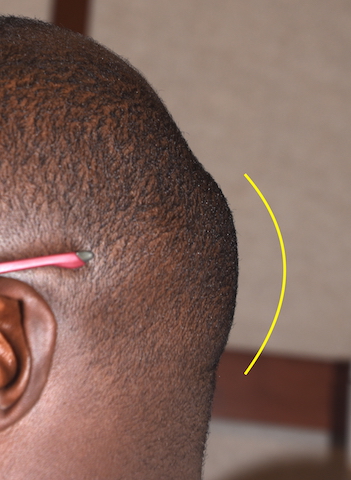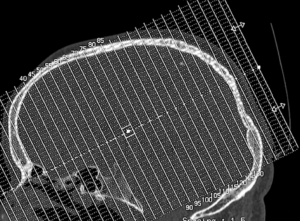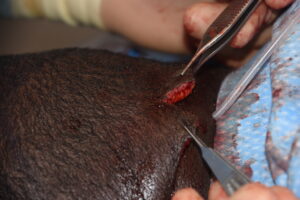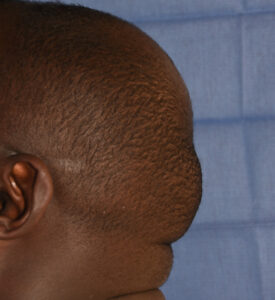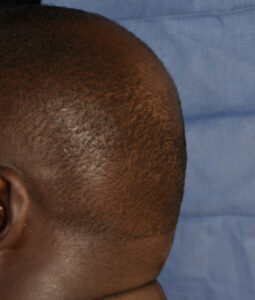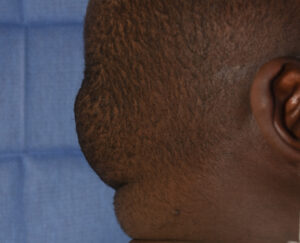Background: The back of the head is frequently called the occiput or occipital region of the skull. While there is anatomic truth in that statement, it is a bit overstated. The occipital bone actually only makes up the lower central area of the back of the head with its superior borders being the inverted v-pattern of he lambdoidal suture. Much of the visible back of the head is really made up of the paired parietal bones north of this suture line.
This becomes evident when a true or complete occipital bony skull deformity exists. The occipital bone sticks out like a round prominences with its visible edges along the lambdoidal suture lines. Such a prominence should be confused with more minor variants of occipital bone protrusions such as the occipital knob or excessively raised nuchal ridges. These are smaller occipital aesthetic prominences that involve exaggerated growths of natural topographic raised features of the bone.
Why the occipital bone is isolation would overgrow while the rest of the skull develops a more normal shape is not known. But regardless of the reason those patients so afflicted (usually men) find it to be an aesthetically disturbing feature.
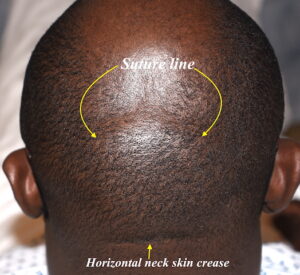
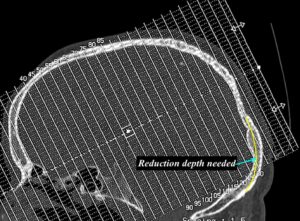
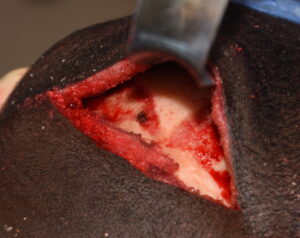

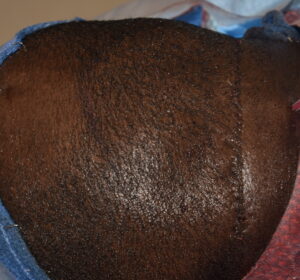
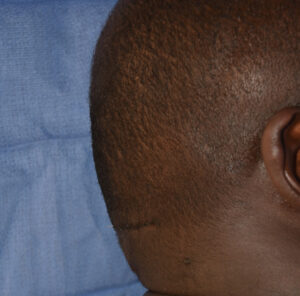
Case Highlights:
1) The visible occipital bone occupies a lower central position on the back of the head and, when overgrown, produces a larger round protrusion along the lambdoidal suture lines.
2) When possible occipital bone protrusion reduction should be done through a low horizontal neck skin crease.
3) Most true occipital bone reductions will require a scalp excision/tuck for the smoothest shape result.
Dr. Barry Eppley
Indianapolis, Indiana

